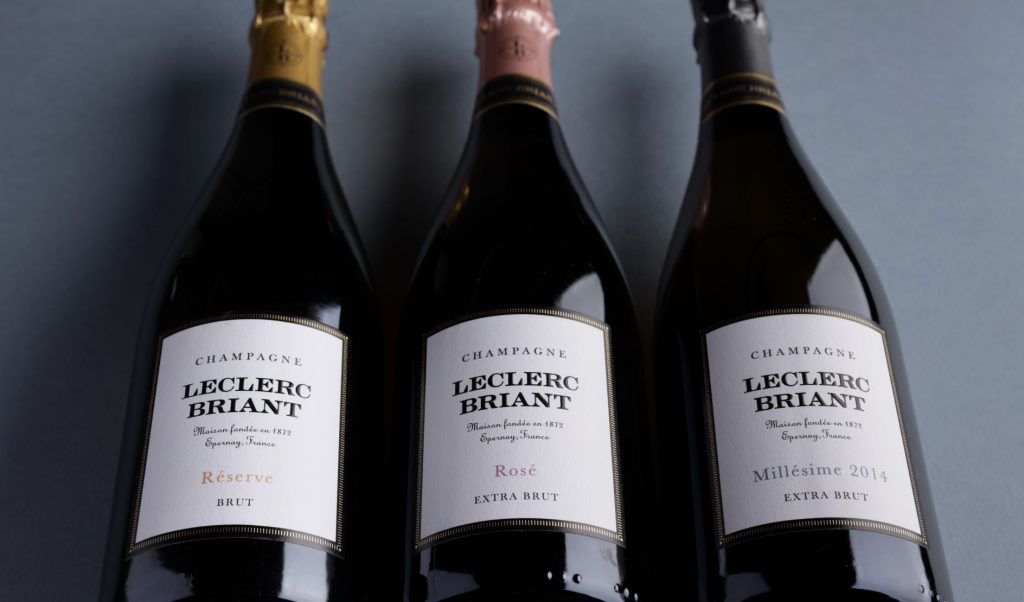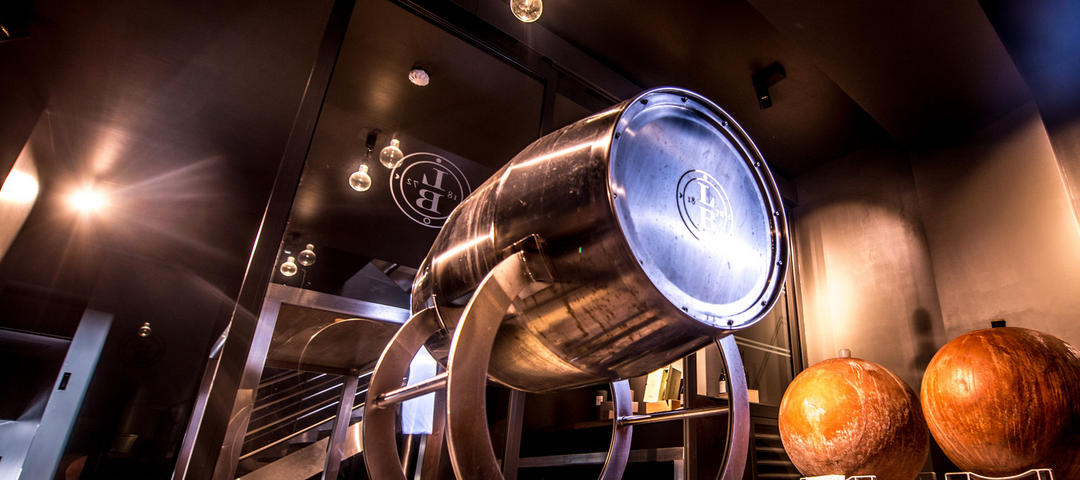Champagne Leclerc Briant: nature in the middle
Author: Emily Miles

From Champagnes aged on the seabed to wines matured in a barrel made from a kilo of gold, Leclerc Briant’s more extreme ideas read like marketing stunts. But the wines are no gimmick. In fact, in the words of our Buyer Davy Żyw, these Champagnes are “imaginative, creative, terroir-driven and vinous”. Here, we speak with Pierre Bettinger, Sales Director, about the philosophy at the heart of the brand.
“The philosophy here is to place nature in the centre of everything we do,” says Pierre Bettinger, Sales Director at Leclerc Briant. “We believe nature is more intelligent and more powerful than us. And it will make a much better job of making wines than we could. By placing nature in the centre of everything we do – philosophy, structure, actions and winemaking – we try to express the quality of our terroir in the purest way.”
This idea – low-intervention, nature-first winemaking – is absolutely at the heart of the sustainability conversation. But it’s not a new direction for Leclerc Briant. “Leclerc Briant was one of the first wineries in Champagne to farm organically in the 1960s. And the very first to farm biodynamically in the 1980s,” Pierre explains.
“We continue to work this way, but not because we want to do things the way they were doing them in the past. We believe it is the way to make great wine today. Our purpose is not to produce organic or biodynamic Champagnes; it’s to produce the best possible wines with the talents and terroir that we have. Organic and biodynamic are not a truth, or a crusade. It’s just our choice.”
The modern era at Leclerc Briant
Leclerc Briant was purchased by its current owners in 2012; saved from being swallowed up by some of the neighbouring houses “which has happened many times before in Champagne,” says Pierre. Fortunately, the four people who took on the property shared a desire to continue making wine with “nature in the centre”.
Winemaker Hervé Jestin is renowned for being at the forefront of the organic and biodynamic movement. “He is the reference when you talk about organic and biodynamic bubbles – not only in Champagne where he has been making wine for more than 35 years – but also in Italy, England, Spain and Russia,” explains Pierre. “In 2012, he dropped his consultancy, except for Hambledon in the UK, to concentrate on Leclerc Briant. So, the wine is being made his way, not just in a historical way.”
The difference in taste
So, how does the idea of “nature in the centre” translate into what you can taste in the glass? One clear stylistic deviation from other Champagne houses is Leclerc Briant’s zero or low dosage wines. “This is a way to offer the purest version of what we do,” says Pierre. “To express the vineyard and the terroir, we want to take away sugar, which can act as make-up to hide flaws. All our classic cuvées are less than four grams of sugar. All our single-vineyard or speciality wines are zero dosage.
“We also reduce the use of sulphur. This is because we believe that your wine is alive – a living thing. If you handle the wine in the right way, then in time and with oxygen, it will behave in the right way so you don’t need sulphites.
“We try to align all our philosophy around sustainability. We use recycled glass for the bottles; recycled aluminium foil for the closure; the labels are cotton not paper.”
Biodynamics at Leclerc Briant
“When I try to explain biodynamic practices, it all comes back to common sense,” says Pierre. “It’s a bit like comparing oriental medicine to occidental medicine. In Europe, we wait to get sick, then treat ourselves with chemicals. In many Asian countries, they believe that if you treat your body well, and balance it with plants, meditation and so on, you can prevent yourself from getting sick. And in the vineyard this idea really works. The proof is what’s in the glass.
“We let the grass grow, we work the soil, we use horses, we have sheep in the vineyard. And we have all kinds of plants in the vineyard to enrich the soil. We also treat the vines with plants, with infusions, to prevent illness. Camomile, for example, is good for regulating temperature, and will help the plant deal with very hot or very cold extremes.”
It’s not a perfect system, but Pierre maintains that in the long-term, the biodynamic way will pay off. “There are challenges, and it’s one of the reasons why people don’t go in this direction. It’s true that when you convert to biodynamic practices, you lose yields; you lose volumes – but only for the first years. For a biodynamic vineyard to reach its full potential takes eight years. It’s a big commitment. It takes more manpower, it takes more attention, it takes more time.”
Innovation, elements and nature
Beyond championing biodynamics in the vineyard, there are a lot of other ideas and innovations at play – as Hervé’s ideas in the winery (and beyond) demonstrate. Abyss, Leclerc Briant’s (almost) impossible to buy cuvée, is aged at the bottom of the ocean, 60metres below sea level.
“It’s a crazy idea,” Pierre admits. “But actually it fits perfectly with our philosophy. We’re working with nature to have perfect ageing conditions: constant temperature, complete darkness, no oxygen, an equilibrium of pressure inside and outside the bottle and an environment totally undisturbed by mankind.”
Back on dry land, there’s no shortage of boundary-pushing ideas. “In 2015, we brought in five terracotta eggs. It’s usual in wineries to see them upright, but ours are on their sides as they would be in nature,” Pierre explains. “When they are standing, it creates a vortex and the wine moves – a natural lees stirring. We don’t want that; it tires the wine.
“Another first is a barrel that is, on the outside, stainless steel. But, on the inside, it’s gold. There’s a layer two microns thick. It’s a 250-litre barrel, and there is the equivalent of a kilo of gold in there.” OK. It sounds very flash. Why gold? “For many reasons,” Pierre says. “It’s not something we talk about a lot. We don’t want people to think we’re throwing gold flakes in bottles. It’s not marketing, it’s research.
“Gold is the purest metal. It’s loaded with energy. It has been fascinating to every civilization in the world at different times and in different geographic locations. Gold was always a sacred connection with God, and with the sun and there as a symbol of alchemy.
“The terracotta connects the wine to the earth; the gold connects it to the sun and solar energy and the connection between the two is the oak.” In 2016, a single-vineyard wine was matured in each of these vessels in turn, bringing the three ideas together.

Glass and titanium barrels
They are also experimenting with glass. “In 2019, we started using 300-litre glass globes. Glass is very interesting because is neutral.” Experimentation doesn’t stop there. In 2020, a 300-litre titanium barrel was trialled; it’s still too soon to judge the results of the experiment.
“I like the fact our winemaker is always questioning everything, including his own ways,” says Pierre. “We try to explore; we were pioneers, in many ways, with organic and biodynamic movement. We want to continue to be pioneers with these new innovations and break new ground.”
Champagne Leclerc Briant’s wines are a part of our Spotlight on sustainability offer.


